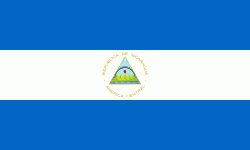Jinotega Department (Departamento de Jinotega)
The Department of Jinotega has a population of 483,404 (2021 estimate) and covers an area of 9,222 km2. It is one of the 15 most extensive departments in the country. Founded on October 15, 1891.
The city of Jinotega "Las Brumas" is the departmental capital of the homonymous department with an urban population of 53 265 inhabitants in the year 2017. It is located in a valley at an altitude of 1,003.87 meters above sea level with a cool climate at an average temperature of 25 °C and a distance of 142 km from Managua (2h 44 min, by Carr.Panamericana / Panamericana Nte./CA-1).
''Source: National Institute for Development Information (INIDE) - Nicaragua. Statistical Yearbook 2016 - 18''
The department generates its own power through Lake Apanás Dam, which is also a tourist attraction. Isabelia Mountain Range contains several cloud forests peaks and massifs such as Chimborazo (1,688 m), Datanlí Diablo (1,550 m) with "la Bujona" waterfall. Also, Penas Blancas Massif (1,700 m) containing several water drops, and Bosawás Biosphere Reserve, the largest biosphere reserve in Central America with about 22,000 km2.
There are various restaurants and markets throughout the department of Jinotega, that serve various fruits, vegetables, meats, and drinks. The city of Jinotega is in the vicinity of the artificial Lake Apanas. The town of San Rafael del Norte located about 20 minutes north of Jinotega City, was General Sandino's Headquarters against US Marine's forced occupation of Nicaragua in the late 1920s and early 1930s. San Rafael has a really nice neoclassical parrish church across the leafy Main Square, and a small museum dedicated to Sandino and his wife, Blanca Aráuz.
Map - Jinotega Department (Departamento de Jinotega)
Map
Country - Nicaragua
 |
 |
| Flag of Nicaragua | |
Originally inhabited by various indigenous cultures since ancient times, the region was conquered by the Spanish Empire in the 16th century. Nicaragua gained independence from Spain in 1821. The Mosquito Coast followed a different historical path, being colonized by the English in the 17th century and later coming under British rule. It became an autonomous territory of Nicaragua in 1860 and its northernmost part was transferred to Honduras in 1960. Since its independence, Nicaragua has undergone periods of political unrest, dictatorship, occupation and fiscal crisis, including the Nicaraguan Revolution of the 1960s and 1970s and the Contra War of the 1980s.
Currency / Language
| ISO | Currency | Symbol | Significant figures |
|---|---|---|---|
| NIO | Nicaraguan córdoba | C$ | 2 |
| ISO | Language |
|---|---|
| EN | English language |
| ES | Spanish language |
















